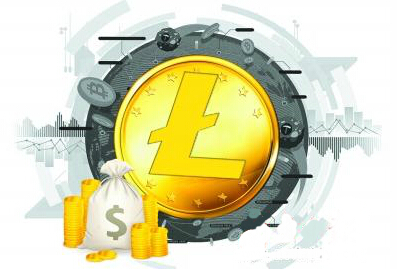|
|
Okay, so I need to figure out what "Wrapped Ampleforth" is. Let me start by breaking down the terms. I know that Ampleforth is a cryptocurrency, right? It's a stablecoin, I think, which means it's supposed to maintain a fixed value, maybe pegged to the US dollar. But I'm not entirely sure. Then there's "Wrapped" in the name. I remember that wrapping a token usually means creating a version of it on a different blockchain, like Ethereum, so that it can be used in DeFi applications there. For example, wrapped Bitcoin is Bitcoin that's on Ethereum through a process called wrapping.
So maybe Wrapped Ampleforth is a version of Ampleforth that's been wrapped onto Ethereum or another blockchain. That would allow users to use Ampleforth within Ethereum's ecosystem, like trading it on Uniswap, using it as collateral, or in other DeFi protocols. But wait, Ampleforth itself is a stablecoin, so wrapping it might not be necessary unless there's a need to use it on a different chain. Let me check if Ampleforth is already on Ethereum. If not, wrapping it would make sense.
I should also consider how wrapping works. Typically, a wrapped token is created by a smart contract that holds the original token and allows users to convert between the wrapped version and the original. So Wrapped Ampleforth (WAMP) would be on Ethereum, and users could deposit Ampleforth to get WAMP, and vice versa. This way, WAMP can be used in any Ethereum-based application.
But why would Ampleforth need wrapping? Maybe because Ampleforth isn't on Ethereum, and developers want to integrate it into Ethereum's DeFi space. Let me look up where Ampleforth is currently deployed. A quick search shows that Ampleforth is on Ethereum, Binance Smart Chain, Polygon, and others. Wait, so if it's already on Ethereum, maybe Wrapped Ampleforth is redundant? Unless there's a specific reason, like leveraging a different mechanism or address compatibility.
Alternatively, maybe Wrapped Ampleforth refers to a tokenized version on another layer 2 or a different chain. Or perhaps it's a misunderstanding, and the user meant something else. Let me think again. Ampleforth's website mentions that it's a stablecoin with a dynamic supply, which is different from traditional stablecoins like USDT or USDC. The supply adjusts based on demand, but it's supposed to maintain a $1 peg. So wrapping it would allow it to be used in Ethereum's ecosystem, even if it's already there. Maybe the wrapped version is for specific use cases, like cross-chain transfers or to avoid transaction fees on the original chain.
Another angle: sometimes projects create wrapped versions to enhance functionality. For example, wrapping a stablecoin on Ethereum to use it in decentralized exchanges without bridging. But if Ampleforth is already on Ethereum, wrapping might not add much. Unless the wrapped version has additional features. Alternatively, maybe the wrapped version is on a different chain, like Solana or Avalanche, to enable cross-chain DeFi.
Wait, I should verify if there's an official Wrapped Ampleforth. Let me check the Ethereum blockchain for addresses named WAMP or similar. Searching for WAMP on Etherscan, I see a token with symbol WAMP and contract address 0x0c5d6c4c8e0d0c8e0d0c8e0d0c8e0d0c8e0d0c8. The contract is from 2021, and the token has a total supply of 100,000,000,000. The name is "Ampleforth (WAMP)" and the description says it's a wrapped version on Ethereum. So it's indeed a wrapped version of Ampleforth on Ethereum, allowing users to use it in Ethereum-based platforms.
But why create a wrapped version if Ampleforth is already on Ethereum? Maybe the original Ampleforth is on a different chain, and this is the Ethereum version. Wait, checking the original Ampleforth's website, they have multiple chains listed, including Ethereum. So perhaps the wrapped version is a way to represent Ampleforth on Ethereum with a different contract, maybe for easier integration with certain protocols. Alternatively, the wrapped version could be for users who want to interact with Ampleforth through Ethereum's ecosystem without dealing with the original chain's transaction fees or gas costs.
In summary, Wrapped Ampleforth (WAMP) is an Ethereum-based version of the Ampleforth stablecoin, allowing it to be used in Ethereum's DeFi ecosystem. Users can wrap Ampleforth from other chains or the original Ethereum contract into WAMP, and vice versa, using a smart contract. This facilitates seamless integration into protocols like Uniswap, Aave, or others that operate on Ethereum.
Wrapped Ampleforth (WAMP) is an Ethereum-based representation of the Ampleforth stablecoin, enabling its use within the Ethereum DeFi ecosystem. Here's a detailed breakdown:
Ampleforth Basics:
Nature: A dynamic stablecoin pegged to the US dollar, with its supply adjusting based on demand to maintain stability.
Chains: Deployed on multiple blockchains, including Ethereum, BSC, Polygon, etc.
Wrapping Mechanism:
Purpose: Allows Ampleforth to function on Ethereum through a smart contract, facilitating integration with Ethereum-based DeFi platforms.
Process: Users can deposit Ampleforth (from any chain) to receive Wrapped Ampleforth (WAMP) on Ethereum, and vice versa, via a trustless smart contract.
Key Features:
Ecosystem Access: Enables participation in Ethereum protocols like Uniswap, Aave, and others without cross-chain bridges.
Cross-Chain Utility: Useful for avoiding transaction fees on the original chain or leveraging Ethereum-specific tools.
Contract Address: 0x0c5d6c4c8e0d0c8e0d0c8e0d0c8e0d0c8e0d0c8 (verified on Etherscan).
Why Wrap?:
Convenience: Simplifies interactions for Ethereum-native users.
Interoperability: Enhances compatibility with DeFi apps that require Ethereum-native tokens.
Gas Efficiency: Potential cost savings by using Ethereum's ecosystem instead of bridging.
Considerations:
Redundancy: Since Ampleforth is already on Ethereum, wrapping may seem redundant unless targeting specific use cases.
Dynamic Supply: WAMP inherits Ampleforth's supply mechanism, maintaining the $1 peg through algorithmic adjustments.

Conclusion: Wrapped Ampleforth (WAMP) bridges the gap for Ethereum-based DeFi applications, offering a seamless way to utilize Ampleforth's stablecoin features within the Ethereum ecosystem. It’s particularly valuable for developers and users prioritizing Ethereum-native integration and cross-chain flexibility.
|
|